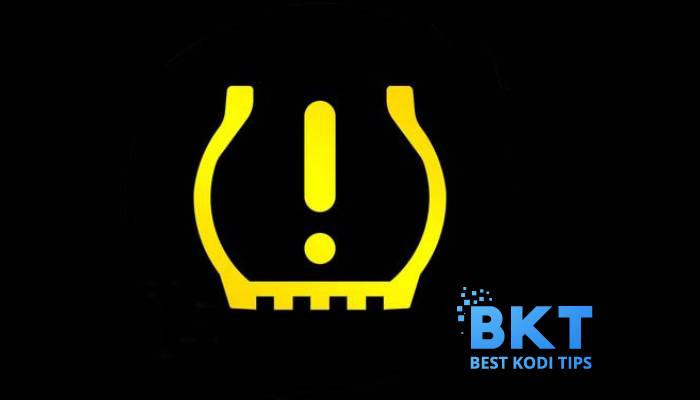Modern vehicles are equipped with an array of sophisticated technologies designed to enhance safety, improve performance, and provide a smoother driving experience. One such vital innovation is the Tire Pressure Monitoring System (TPMS). While often overlooked, the TPMS plays a critical role in maintaining optimal tire pressure, which is essential for both safety and efficiency on the road. In this article, we’ll delve into the world of TPMS, understand its significance, and explore the common warning signs that indicate when it’s time to take action.
Understanding TPMS
Function and Operation
The TPMS is a sensor-based system that monitors the air pressure within your vehicle’s tires. It ensures that each tire is inflated to the manufacturer-recommended pressure levels. By doing so, the TPMS contributes significantly to vehicle safety, handling, and fuel efficiency. The system alerts the driver whenever tire pressure falls below the recommended threshold, preventing potential accidents and tire-related problems.
Types of TPMS
There are two primary types of TPMS: direct and indirect.
- Direct TPMS: This type utilizes individual pressure sensors located inside each tire. These sensors provide real-time pressure data to the vehicle’s onboard computer. When pressure drops below the specified limit, the TPMS warning light illuminates on the dashboard.
- Indirect TPMS: Instead of pressure sensors, indirect TPMS relies on the vehicle’s anti-lock braking system (ABS) to monitor tire pressure. It measures the rotational speed of each tire and detects deviations caused by underinflation. While indirect TPMS is less precise than its direct counterpart, it is still effective in alerting drivers to potential issues.
Common TPMS Warning Signs
Dashboard Indicator Light
One of the most recognizable TPMS warning signs is the illuminated dashboard indicator light. It resembles an exclamation point inside a horseshoe and varies in color, often appearing in yellow or orange. This light serves as a clear indication that the tire pressure in one or more tires has fallen below the recommended level. It’s important to note that the TPMS light differs from other warning lights, such as the engine or battery light. To learn more about proper tire maintenance and TPMS.
Low Tire Pressure Alert
If you feel that your vehicle is handling it differently or if you notice a subtle thumping noise, it might be due to low tire pressure. Underinflated tires can reduce traction, negatively affecting your ability to control the vehicle, especially in adverse weather conditions. Additionally, low tire pressure can lead to decreased fuel efficiency and increased tire wear. If you encounter such symptoms, it’s crucial to check your tire pressure promptly.
Fluctuations in Pressure
Sudden fluctuations in tire pressure can trigger the TPMS warning. If you notice a rapid drop in pressure, it could indicate a punctured or damaged tire. Driving on a flat or severely underinflated tire can cause irreversible damage, such as a sidewall blowout. This not only poses a safety risk but may also result in costly repairs or even the need for a tire replacement.
Erratic Temperature Changes
Temperature plays a significant role in tire pressure. As temperatures rise or drop, tire pressure can fluctuate accordingly. This is particularly evident in extreme weather conditions. For instance, during colder months, tire pressure tends to decrease, potentially triggering the TPMS warning. Conversely, as temperatures rise, tire pressure may increase. It’s essential to recognize the influence of temperature on tire pressure and take appropriate action when necessary.
When to Take Action
Immediate Response
When the TPMS warning light illuminates on your dashboard, it’s crucial not to ignore it. The system is alerting you to a potential safety issue that requires immediate attention. Here’s what you should do:
- Pull Over Safely: If the TPMS warning light comes on while you’re driving, find a safe place to pull over and inspect your tires.
- Check Tire Pressure: Use a reliable tire pressure gauge to measure the pressure in each tire. Compare the readings to the manufacturer’s recommended pressure levels, which can typically be found in your vehicle’s owner’s manual or on a sticker located on the driver’s door jamb.
- Inflate Tires: If you find that any of your tires are underinflated, add air to bring them up to the correct pressure. Many gas stations and automotive shops offer air pumps for this purpose.
- Inspect for Damage: While checking the tire pressure, also visually inspect each tire for signs of damage, such as cuts, bulges, or nails embedded in the tread. If you discover any damage, it’s advisable to have the tire inspected by a professional.
Regular Maintenance
Preventing TPMS warnings starts with proactive maintenance. Establishing a routine for checking and maintaining proper tire pressure is key to a safer driving experience. Here’s what you can do:
- Scheduled Checks: Make it a habit to check your tire pressure at least once a month and before long trips. Regular checks help you catch any gradual pressure loss before it becomes a significant issue.
- Use a Quality Gauge: Invest in a reliable tire pressure gauge to ensure accurate readings. Digital gauges are user-friendly and provide precise measurements.
- Correct Inflation: Refer to your vehicle’s manual for the recommended tire pressure. Ensure that your tires are inflated to the correct levels, taking into account the type of driving you do and the load you typically carry.
Professional Inspection
While routine checks are essential, it’s equally important to have your tires and TPMS system inspected by a qualified mechanic. A professional can diagnose issues that might not be immediately apparent to the average driver. Here’s when you should seek professional assistance:
- Persistent Warnings: If the TPMS warning light remains illuminated even after you’ve inflated your tires to the correct pressure, there might be an underlying issue with the TPMS sensors or the system itself.
- Damage or Leakage: If you suspect damage to a tire or notice a slow leak, it’s advisable to have a professional inspect and repair the tire promptly.
Replacement and Repair
TPMS sensors are electronic components that can degrade over time. In some cases, they might need to be replaced. Additionally, if you encounter severe tire damage, it’s essential to address the issue promptly. Consider the following:
- Sensor Replacement: TPMS sensors have a lifespan of approximately 5-10 years. If you experience frequent sensor failures or your sensors are reaching the end of their lifespan, it’s wise to have them replaced.
- Tire Repair: In the case of irreparable tire damage, such as sidewall punctures, it’s crucial to replace the tire. Attempting to repair such damage could compromise your safety on the road.
Preventive Measures
Proper Tire Inflation
Maintaining the recommended tire pressure offers a multitude of benefits. Properly inflated tires:
- Enhance Safety: Adequate tire pressure ensures optimal traction and handling, reducing the risk of accidents.
- Improve Fuel Efficiency: Underinflated tires create more rolling resistance, leading to decreased fuel efficiency. Keeping your tires properly inflated can save you money at the pump.
- Prolong Tire Life: Overinflated or underinflated tires wear unevenly, reducing their lifespan. Proper inflation helps your tires wear evenly and last longer.
Seasonal Considerations
Different seasons can impact tire pressure due to temperature variations. Be mindful of the following:
- Winter: Cold temperatures cause tire pressure to drop. Check your tire pressure more frequently during the colder months and ensure your tires are properly inflated.
- Summer: As temperatures rise, tire pressure increases. During hot weather, monitor your tire pressure and avoid overinflation.
Tire Maintenance
Regular tire maintenance contributes to both tire longevity and vehicle safety:
- Tire Rotation: Regularly rotating your tires ensures even wear and extends their lifespan. Consult your vehicle’s manual for the recommended rotation interval.
- Alignment: Proper wheel alignment prevents uneven tire wear and helps maintain accurate vehicle handling.
- Tread Inspection: Monitor your tire tread depth regularly. Worn-out tread reduces traction, especially on wet or slippery roads.
Conclusion
The Tire Pressure Monitoring System (TPMS) is a valuable tool that alerts drivers to potential issues with tire pressure. Recognizing and addressing common TPMS warning signs is essential for ensuring your safety on the road. By responding promptly to TPMS warnings, maintaining proper tire pressure, and adhering to preventive measures, you can enjoy a smoother, safer, and more fuel-efficient driving experience. Remember, a well-maintained tire is a reliable tire, and it’s up to you to take the necessary actions to keep your vehicle performing at its best.















Comments